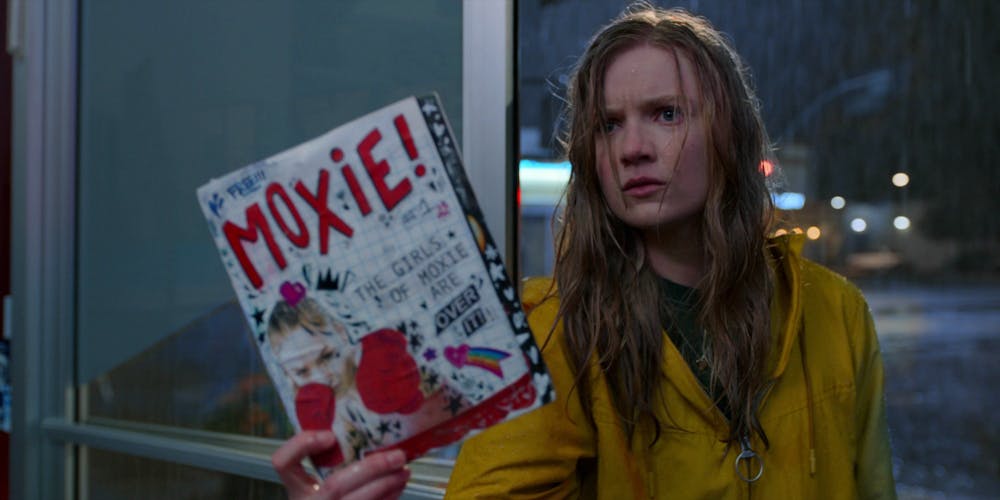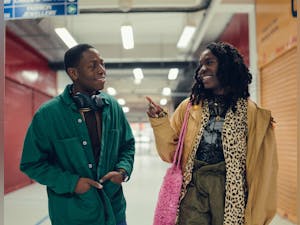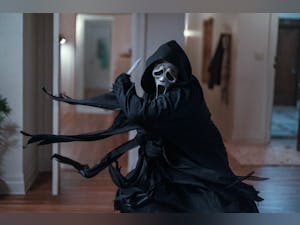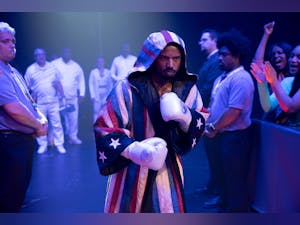From: Silver Screen
‘Moxie’ attempts intersectional feminism but falls flat

The protagonist in Amy Poehler’s new film, “Moxie,” Vivian (Hadley Robinson) is asked to answer the following prompt on her University of California, Berkeley application: “Reflect on a cause you feel passionate about. Explain its significance to you and what steps you took to make a change.”
For an introvert with only one friend, Claudia (Lauren Tsai), the best answer Vivian came up with is, “Being a person, I care about a lot of issues.” She then pauses, deletes the word “person” and replaces it with “woman.”
Vivian then asks her mother, Lisa (Poehler), what 16-year-old girls care about. Lisa responds that all she and her friends cared about when they were her age was smashing the patriarchy. This is what Poehler’s film, based on a Jennifer Mathieu novel with the same title, attempts to do: add to the conversation of smashing the patriarchy.
The stated goal of “Moxie” is clear enough: present a better, more intersectional brand of feminism. But does this really add to the conversation of smashing the patriarchy? I’m not so sure. The movie has many plot holes and missed opportunities to explore intersectional feminism further. But, at the same time, it is always a pleasure to see a film centering the voices of women.
Before I tell you why, though, you’ll need more context.
In Vivian’s English class, a new student, Lucy (Alycia Pascual-Peña), is asked to answer how women are portrayed in F. Scott Fitzgerald’s “The Great Gatsby.” Lucy ignores this question and asks why students are still required to read books by old white men, including Fitzgerald.
Rather than giving Lucy the space to share her thoughts, Mitchell Wilson (Patrick Schwarzenegger), the school’s beloved quarterback, interrupts her to say that “The Great Gatsby” is a classic.
Wilson and his football team friends not only interrupt their female classmates, but they also release a list every school year, ranking them on arbitrary categories: “Best Rack,” “Most Bangable,” “Most Obedient” — awarded to Vivian — the list goes on.
In a stairwell, Vivian suggests to Lucy that Mitchell will leave her alone and bother someone else if she keeps her head down. Lucy responds, “Thanks for the advice, but I’m going to keep my head up, high.”
After listening to Lucy’s speech in English and learning about her mom’s history with the feminist movement, Vivian creates an anonymous zine titled “Moxie” to combat her high school’s sexist policies and her peers’ sexist behavior.
After the creation of the zine, a revolution breaks out at their high school with Bikini Kill’s “Rebel Girl” as the musical backdrop. It begins with a show of silent solidarity with the Moxie mission’s supporters drawing hearts and stars on their hands and escalates after that, getting louder and more involved with every phase.
All the while, the zine’s creator, Vivian, does what she can to stay anonymous. Everyone wants to know who “Moxie” is, including the school’s passive principal (Marcia Gay Harden) and even the other Moxie club members, but she insists on being unknown.
The conversation about intersectional feminism in this film was on the verge of working, but fell short not once, but twice, and what baffles me is that it seemed like the film knew that.
In a scene with Vivian and her mom at dinner, Vivian inquires about how her mom knew what to protest. Her mom said that she and her friends would just protest everything that did not feel right. She said they made a lot of mistakes, including not being intersectional enough.
This acknowledgment was an important one, and I thought that meant Vivian would work to make sure she didn’t do that.
When confronted by Claudia for not understanding her struggle because Vivian is white, I assumed that Vivian would reckon further with her role in the Moxie movement and perhaps recenter who is at the forefront of the conversation. Unfortunately, she didn’t, at least not in a way I would have wanted to see.
However, it’s important to note that Vivian is a character on the pages of Mathieu’s book and on the screen in Poehler’s film; I can’t blame her for how she was created. This film then has me wondering: why was it created? Did we need the voices of Poehler and the two screenwriters, Dylan Meyer and Tamara Chestna, right now? We already have it as a book; did it need to be a movie?
In a roundtable discussion with two other student newspapers, Pascual-Peña said that she thinks accountability is taken in this film when Poehler’s character admitted to the lack of intersectionality in her and her friends’ feminism. She goes on to explain her character Lucy’s role with intersectional feminism in the film.
“I think, inherently by existing, she is a definition of intersectional feminism,” Pascual-Peña said. “I proudly speak Spanish in a film. I'm proudly a Black woman who wears braids and is unapologetic. I think that just by existing but also by putting a name to certain things throughout the film, I am discussing the importance of intersectionality.”
In the Q&A interview released in the press materials for the film, Poehler seems to justify the film’s intersectional work by listing the different perspectives that “Moxie” presents its viewers with.
“Vivian publishes Moxie, but the movement becomes something different to everyone,” Poehler said. “We really tried to do a good job of showing a world where different voices and different points of view are represented in this new feminist order. All of Vivian’s friends fall on different points of the activism scale.”
Lucy is a young, Afro-Latina woman, who is open about her activism. Claudia is a first-generation Asian American struggling to maintain the facade of a “model minority.” Yet, at the center of these two young women draped in classic media tropes, is always Vivian, the white ideal of who a feminist should be.
“Moxie” should not be the only feminist work that you consume in a day.




